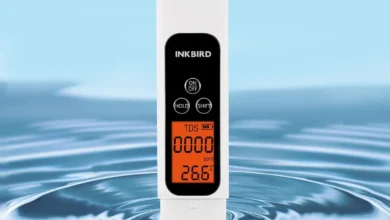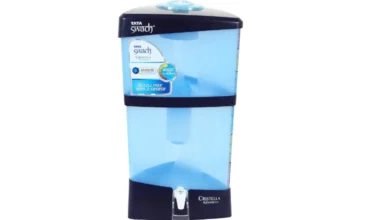Unveiling the Environmental Impact of Reverse Osmosis Water Purification

I. Introduction
The global quest for clean and safe drinking water has elevated Reverse Osmosis (RO) water purification into a prominent role. Beyond the surface-level purification process, this exploration delves into the intricate layers of environmental consequences associated with the widespread implementation of RO systems. Let’s embark on this journey to unravel the complexities that coexist with the pursuit of water purity.
II. The RO Process: A Symphony of Technology
Understanding the environmental implications requires a closer look at the RO process. At its essence, RO employs high pressure to force water molecules through a semi-permeable membrane. While this selective filtration ensures purified water, the energy-intensive nature of the process raises questions about its ecological impact.
Also Read: Best Water Purifier Under 15000 In India
9 Best Water Purifier in India
III. Energy Consumption and Carbon Footprint: A Weighty Balance
3.1 Powering the Process
RO systems demand a substantial amount of energy to generate the required pressure for effective filtration. Examining the sources of electricity, system efficiency, and operational hours is crucial in evaluating the overall energy consumption.
3.2 Evaluating Carbon Emissions
A nuanced analysis of carbon emissions associated with RO systems is essential. Understanding the greenhouse gas implications, assessing the environmental cost per gallon of purified water, and comparing these metrics with alternative water treatment methods provide a comprehensive view of the environmental trade-offs.
IV. Brine Disposal: A Salty Dilemma in Aquatic Ecosystems
4.1 Generation of Brine Waste
The generation of brine, a concentrated solution of rejected contaminants, is often overlooked in discussions about RO systems. Proper disposal practices are vital to prevent adverse impacts on aquatic ecosystems, making it crucial to explore responsible strategies.
4.2 Mitigation Strategies
In mitigating the environmental impact of brine disposal, innovative strategies take center stage. Discussing brine concentration technologies, responsible discharge practices, and potential applications for the byproduct becomes integral in crafting sustainable solutions that balance water purity with environmental stewardship.
V. Resource Utilization: The Ecological Tapestry of Materials and Water
5.1 Material Inputs in RO Systems
The materials constituting RO membranes and system components have their own ecological stories. A deep dive into the environmental impact of material extraction, production, and disposal within the life cycle of RO technology provides insights into the overall environmental load.
5.2 Water Usage Considerations
While RO systems excel in water purification, they influence water usage patterns. Analyzing water input, efficiency, and potential consequences in regions grappling with water scarcity unravels the intricate relationship between water purification and conservation.
VI. Comparisons with Alternative Technologies: A Green Spectrum
6.1 RO vs. Conventional Filtration
To understand the environmental position of RO systems, a thorough comparison with conventional water treatment methods is imperative. Scrutinizing scenarios where RO excels and where alternative technologies may present more eco-friendly choices allows for nuanced conclusions about the ecological merit of each approach.
6.2 Advancements in Green Technologies
In the pursuit of sustainability, exploring advancements in green water purification technologies offers a glimpse into a more environmentally conscious future. From energy-efficient membranes to eco-friendly materials and sustainable practices, this section illuminates the path towards a greener evolution of RO systems.
VII. Regulatory Framework and Sustainability Standards
7.1 Existing Regulations
Navigating the existing regulatory landscape surrounding RO systems provides a crucial backdrop. An examination of environmental regulations and standards sets the stage for evaluating how well these frameworks address the ecological aspects of water purification.
7.2 Towards Sustainable Practices
Proposing actionable and sustainable practices and policies for the water purification industry becomes imperative. Aligning industry practices with environmental goals fosters a harmonious balance between the imperative for water purity and the responsibility towards ecological sustainability.
VIII. Conclusion
In conclusion, the environmental impact of Reverse Osmosis water purification is a tapestry woven with intricate threads. From energy consumption and brine disposal challenges to material inputs and comparisons with alternative technologies, this exploration seeks to provide a profound understanding of the ecological consequences associated with RO systems. By scrutinizing each facet, we embark on a journey towards a harmonious coexistence where the need for water purity is met with a profound commitment to environmental sustainability. This nuanced perspective ensures that the pursuit of clean water aligns with responsible environmental stewardship, paving the way for a sustainable future.






